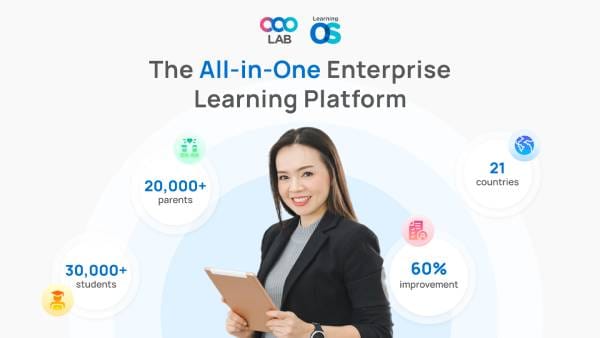In recent years, Vietnam's retail landscape has experienced a significant shift, marked by a notable decline in foot traffic to stores. According to Palexy AI’s report, consumer visits per store have dropped from 5.6K in May 2022 to 3.4K in May 2024, reaching a two-year low. This trend underscores a critical challenge for retailers: how to maintain profitability and sustain growth in an environment where fewer consumers are walking through their doors. Let's find out more with OOOLAB in the article below.

I. Why should retailers care about declining foot traffic?
The answer lies in the direct correlation between foot traffic, store conversions, and revenues. Simply put, fewer visitors mean fewer opportunities to convert browsing shoppers into paying customers. If retailers fail to adapt and improve their store conversion rates, they risk a corresponding decline in revenues. This reality is already impacting many retailers, highlighting the urgent need for proactive strategies to mitigate these challenges.

>>> Read more: The importance of employee upskilling
>>> Read more: What is sales training?
>>> Read more: 5 essential sales techniques every sales rep should master
>>> Read more: The top sales training books for professional developement
>>> Read more: How can Learning Enterprises Prevent Student Churn?
>>> Read more: 5 Reasons Why you should choose a SaaS for your LMS
II. What can retailers do to improve their store conversion rates?
Successful retailers are responding to this shift with innovative approaches aimed at maximizing every customer interaction and optimizing sales performance. Here are some key strategies that leading retailers are implementing:
1. Upskilling sales capabilities
Traditionally, frontline store staff may have focused primarily on customer service and order fulfillment. However, in today's retail landscape, there is a growing emphasis on transforming these roles into proactive sales positions. Retailers are investing in training programs that equip their staff with advanced sales techniques. This includes techniques for delighting customers, overcoming objections, and professionally closing sales. By upskilling their sales capabilities, retailers can significantly enhance their conversion rates, thereby offsetting the impact of declining foot traffic on overall revenues.
2. Applying customer-centric approaches
In an era where consumers have more choices and higher expectations, successful retailers are adopting customer-centric approaches. Frontline store staff are encouraged to act as trusted advisors rather than mere order takers. This involves building meaningful connections with shoppers, understanding their needs, and offering personalized recommendations. By focusing on building long-term relationships with customers, retailers can convert casual visitors into loyal patrons who return again and again.
3. Enhancing product knowledge
Product knowledge is crucial for frontline staff to effectively serve as trusted advisors. Retailers are investing in comprehensive training programs to ensure that their employees are well-versed in the features, benefits, and applications of their products. By becoming product experts, frontline staff can confidently recommend solutions that exceed customer expectations and meet their specific needs. This not only enhances the customer experience but also increases the likelihood of closing sales successfully.
III. Benefits of boosting store conversion rate for retailers
Investing in these strategies is not merely a cost for retailers; it is a strategic investment in their long-term success. The opportunity cost of failing to adapt to changing consumer behaviors and declining foot traffic can be substantial. Well-trained staff who are capable of maximizing every sales opportunity can mitigate the negative impact of reduced foot traffic on revenues. Additionally, investing in training programs can lead to reduced turnover rates among employees, further contributing to operational stability and cost savings.
For instance, some enterprise retail clients have reported significant financial gains from modest improvements in conversion rates. A mere 1% increase in conversion rates has translated into as much as $25 million in additional revenues for some retailers. Moreover, these improvements have also been accompanied by a notable decrease in employee turnover rates, which further enhances operational efficiency and customer satisfaction.
Implement your LMS for your learning TODAY

IV. Conclusion
In conclusion, the challenges posed by declining foot traffic in Vietnam's retail sector require a proactive and strategic response from retailers. By upskilling sales capabilities, adopting customer-centric approaches, and enhancing product knowledge among frontline staff, retailers can effectively navigate these challenges and sustain profitability. The key lies in transforming every customer interaction into an opportunity to build loyalty, drive sales, and ultimately thrive in an increasingly competitive market.
If you are a retailer concerned about declining foot traffic and uncertain about how to proceed, it may be beneficial to explore these strategies further. Investing in your staff's skills and capabilities could be the key to unlocking new growth opportunities and securing your position in the evolving retail landscape.
About us
At OOOLAB (pronounced 'uːlæb'), our mission is to make complex learning operations simple. We aim to positively impact the lives of over 1,000,000 learners and educators by the end of 2026.
OOOLAB's LearningOS provides educational institutions and corporate enterprises with an all-in-one solution to create and deliver engaging learning experiences.
Reach out to us at: Linkedin, FaceBook


